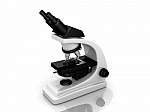
PGD is a procedure that could be done to detect certain genetic defects in an embryo which is created via in-vitro fertilization (IVF).
1. Who can benefit from PGD?
Couples who are at risk of passing on certain genetic defects to their unborn child. Possible suitable couples include:
- Women more than 35 years old
- Chromosomal disorder
- Carriers of single gene disorders
- Carriers of sex-linked genetic disorders
- Recurring pregnancy loss due to underlying genetic problems
2. How is PGD performed?
- The women would have to undergo the process of IVF to produce embryo.
- A single cell is removed from the embryo
- DNA is retrieved from the cell via a technique known as polymerase chain reaction (PCR)
- An analysis is done on the DNA sequence to detect any genetic defect.
- Only when there is no genetic defect is identified would then the embryo is being transferred into the women’s womb.
3. What diseases that PGD could detect?
- Single gene disorders e.g cystic fibrosis, Tay-Sachs disease or sickle cell anemia.
- Recessive sex-linked disorders e.g hemophilia, fragile X syndrome
- Chromosomal disorders e.g deletion, translocation, inversion
- Dominant sex-linked disorders e.g Rett syndrome
4. What are the benefits of doing a PGD?
- Provides an option for the couple to either continue or terminate the process of pregnancy
- Reduces the need for invasive test during pregnancy e.g amniocentesis to determine whether the fetus has the genetic defect.
- Reduces medical expenses that may be associated if the baby has inherited the genetic defect.
5. What are the risks associated with PGD?
- In certain cases, once the defective embryo matures it does not necessarily have the genetic defect.
- PGD may be associated with destruction of defective embryo.
- Some of the genetic defects may not manifest until the individuals is in their late 30 or 40s.
6. How could I do a PGD?
Unfortunately PGD is not available in all hospitals. Ask your doctor about this test.
Filed under Assisted Reproductive Techniques | No Comments








